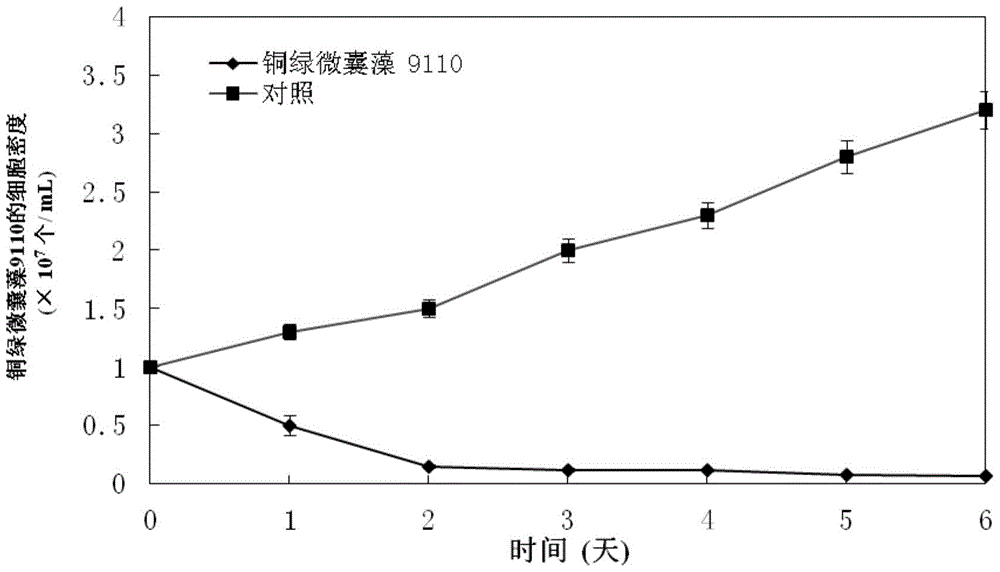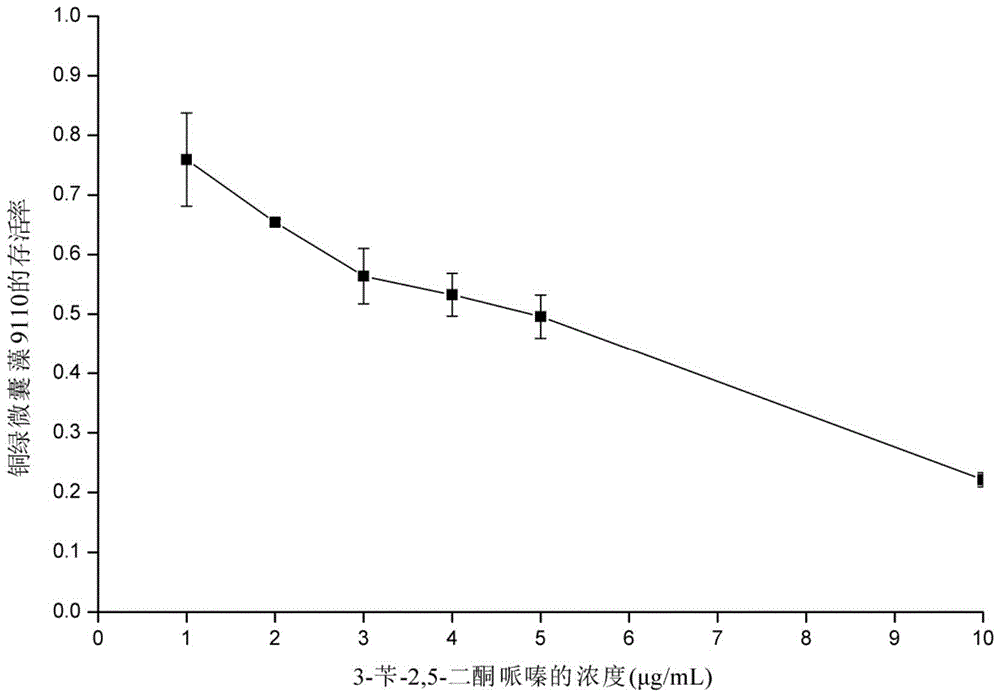Application of a microbacterium strain and its effective algae-dissolving component in controlling cyanobacteria bloom
A microbacillus and algae-dissolving technology, which is applied in the field of environmental microorganisms, can solve the problems of high processing cost and secondary pollution, and achieve the effect of simple preparation method, short preparation cycle and significant lethal effect
- Summary
- Abstract
- Description
- Claims
- Application Information
AI Technical Summary
Problems solved by technology
Method used
Image
Examples
Embodiment 1
[0034] The screening of embodiment 1 algae-lytic bacteria
[0035] Add 10mL of natural water samples collected from the Meiliang Bay waters of Taihu Lake to 90mL of algae liquid of Microcystis aeruginosa 9110 in the logarithmic phase, take the yellow algae liquid two days later, apply the gradient dilution method to the beef extract peptone medium agar plate, and cultivate at 28°C After 24 hours, take a plate with a moderate colony density, and select different strains according to the different colony shapes.
[0036] The screened strains were inoculated into 10 mL of beef extract peptone medium, cultured at 28°C and 220 rpm for 24 hours, and 10 mL of cultured bacterial liquid was added to 90 mL of algae liquid of Microcystis aeruginosa in logarithmic phase. In addition, 10 mL of sterilized beef extract peptone medium was also added to 90 mL of algae liquid as a control. All the algae fluids of the experimental group and the control group were cultured in the light incubator...
Embodiment 2
[0040] The identification of embodiment 2 microbacteria GLY-3109 bacterial strain
[0041] The strain GLY-3109 was identified by morphological observation, staining, physiological and biochemical reactions, and 16srRNA gene sequence analysis. flagellar movement. Facultative anaerobic. On nutrient agar, the colonies are flat, light orange, and the pigment does not diffuse. Basophilic, able to grow at pH 6.5-11.5. Acids can be produced from glucose, sucrose, galactose, and some other sugars, the main products being lactic, acetic, and formic acids. The strain was positive for contact enzyme and negative for oxidase. Can reduce nitrates, hydrolyze gelatin, starch and casein. The optimum growth temperature is 37°C. After 16srRNA gene sequence analysis and homology comparison, it was known that the strain had 99% homology with a certain Exobacterium strain in GenBank, so it was identified as an Exobacterium genus and named Exobacterium GLY-3109 strain.
Embodiment 3
[0042] The preparation method of embodiment 3 microbacterium GLY-3109 fermented liquid and ethyl acetate extract thereof
[0043] Microbacterium GLY-3109 was inoculated in sterilized beef extract peptone medium with pH 7.0 according to 1% inoculation amount, and cultured on a shaker at 220 rpm at 28° C. for 48 hours to obtain a fermentation broth containing Microbacterium GLY-3109. Add ethyl acetate into the fermentation broth at a ratio of 1:1, put it into a shaker and vibrate for 24 hours, and separate the upper layer solution, that is, the ethyl acetate extract. The ethyl acetate was evaporated to dryness, dissolved in water, and filtered through a microporous membrane with a pore size of 0.22 μm for further purification of metabolites.
PUM
 Login to View More
Login to View More Abstract
Description
Claims
Application Information
 Login to View More
Login to View More - R&D
- Intellectual Property
- Life Sciences
- Materials
- Tech Scout
- Unparalleled Data Quality
- Higher Quality Content
- 60% Fewer Hallucinations
Browse by: Latest US Patents, China's latest patents, Technical Efficacy Thesaurus, Application Domain, Technology Topic, Popular Technical Reports.
© 2025 PatSnap. All rights reserved.Legal|Privacy policy|Modern Slavery Act Transparency Statement|Sitemap|About US| Contact US: help@patsnap.com



